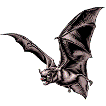Museum, University of Nebraska State

University of Nebraska State Museum: Mammalogy Papers
Document Type
Article
Date of this Version
3-29-1972
Citation
Occasional Papers of the Museum of Texas Tech University (March 29, 1972) no. 3, 22 p.
Abstract
Vesper mice of the genus Nyctomys are relatively rare, arboreal rodents restricted to Middle America (eastern Panama to southern Mexico). Little is known concerning the biology of these secretive animals. Studies of variation of the one species, Nyctomys sumichrasti, have been limited to descriptions of new taxa (for example, see Goldman, 1916, 1937, and Laurie, 1953) and ecological observations have been confined to faunal accounts of political units (Goodwin, 1934; Hall and Dalquest, 1963) or were made coincidental to studies of other species (Lawlor, 1969; Fleming, 1970). Birkenholz and Wirtz (1965) recorded observations on the behavior, reproduction, and early development of young in a laboratory colony of vesper mice; the male reproductive organs and accessory structures have been described by Burt (1960), Arata (1964), and Hooper and Musser (1964).
In the summer of 1964, a local population of Nyctomys sumichrasti florencei was discovered at San Antonio, Departamento de Chinandega, in northwestern Nicaragua. This area was visited again in the summers of 1966 and 1967, and in the spring of 1968, and the present paper details variation in this population and records such ecological information as was obtained. The first three visits to San Antonio were in the wet season, whereas the last was in the dry season. Of the 100 specimens of vesper mice collected there, the majority (55) was taken in 1966. A few mice were obtained in traps placed on the ground at the bases of trees but most were shot with pistols (dust shot) as they perched on, or scampered along, low branches and vines in dense vegetation. It is noteworthy that only 10 N. sumichrasti were obtained elsewhere in Nicaragua in the four years of our field work.
All specimens discussed below are deposited in the collections of the Museum of Natural History at The University of Kansas. All measurements are in millimeters and weights are recorded in grams.
Four sources of nongeographic variation--age, secondary sexual, individual, and seasonal--are analyzed; these are of interest because they reveal to some extent the genetic variability within the species. An understanding of them is basic to the study of geographic variation.
Included also are ecological comments including descriptions of the area, habitat and interspecific relationships, sex ratio and age structure, food habits, reproduction, and ectoparasites.


Comments
Copyright 1972, Texas Tech University. Used by permission.